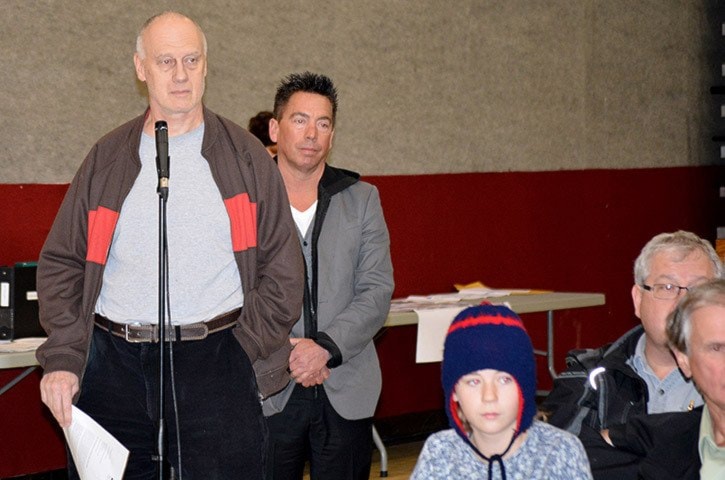Five monitoring buoys were installed this week to continue to monitor Quesnel Lake, the Ministry of Environment said during a public meeting in Williams Lake Monday to update the public on the Mount Polley Mine Breach.
“We’ve been monitoring metal levels of the aluminum, copper, iron levels and suspended solids, which is another representation of the murkiness of the water,” said Hubert Bunce, environment ministry director for Mount Polley.
The buoys were distributed throughout the length of the lake, in the West Arm, and in the area of the sediment plume.
“They will enable us to record the turbidity levels and keep an eye on where the plume is in the winter months when it might not otherwise have been easy to get on the lake, particularly if it starts to ice up,” Bunce said.
Bunce said mitigating the disaster is not going to happen overnight.
“It’s going to be a process of gaining information and reviewing that information to determine what the next best steps are to get to the best possible result.”
A phased approach for the cleanup means the first phase will last until June 2015.
“That will be for the freshet and spring breakup when we will need to protect against further environmental damage,” Bunce said.
Phase two will span from July 2015 to August 2016 with remediation work, and efforts to restore the environment back to an effective and useful area that will be self-sustaining.
From 2016 into the future, the ministry will continue to monitor and ensure the objectives of phase two are going to be achieved, Bunce said.
Williams Lake resident Sage Birchwater asked if there’s any plan to remove “toxic” tailings from the landscape.
Responding, assistant deputy minister of the environment Lori Halls said one of the reasons for the remediation plan being in two phases is because the ministry required the company to focus on protecting the area for spring freshet or spring breakup.
She told Birchwater that sample and geochemistry results will inform the longterm remediation decisions around Hazeltine Creek, Polley Lake and Quesnel Lake.
“There’s still a lot more information that needs to come into play before we can make those final decisions,” Halls said.
John Pickford, also a resident of Williams Lake, asked what changes in procedure and infrastructure will take place at the mine to prevent it from ever happening again.
“Once the investigation is over, I think we’re going to understand exactly what happened,” said Don Parsons, Mount Polley Mine chief operations officer.
“What we’ve come to understand is that we have some subsurface weak material under there and we know what it’s going to take to buttress the dam.”
Mount Polley will build a stronger dam, with a higher factor of safety, than Canadian guidelines call for, he added.
Pickford asked if inspection capacity will change, to which Halls said the three investigations into the mine spill will help determine that.
“Very much,” Halls said. “One of the things were looking at is not just the actions of the company but the actions of government as well. Nothing’s off the table.”
